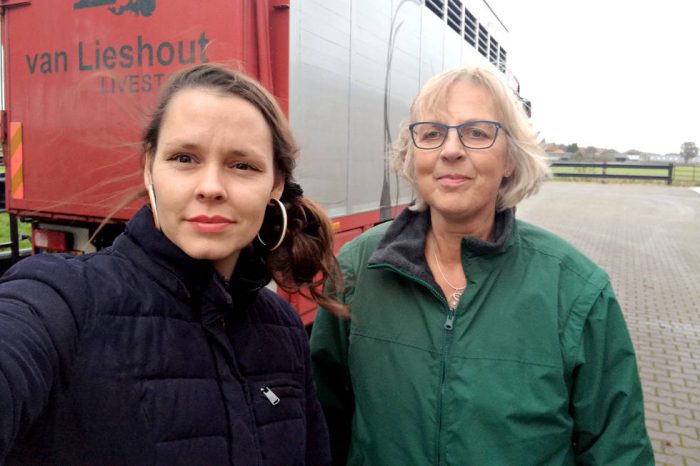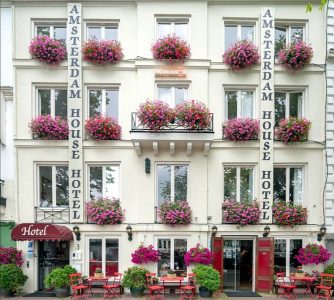Today we paid a surprise visit to Van Lieshout cattle assembly center in Sint-Oedenrode (The Netherlands). We received a warm welcome from the owner and he took us on a tour of his farm right away.
At the time of our visit, bulls and dairy cows were gathered for slaughterhouses in the Netherlands and Belgium. The dairy cows were kept together but the bulls were tethered to avoid conflicts. Each stall had a thick layer of fresh straw and a small spoon-water basin. We advised Van Lieshout to eventually replace these small water basins with larger and deeper troughs from which cattle can drink more easily.
We also discussed watering and feeding unweaned calves. Van Lieshout collects these calves in the morning and takes them to fattening farms in the evening. In the morning, the calves usually receive milk from the farmer before they are taken to Van Lieshout. The owner thinks this is important because calves which have received milk prior to transport are calmer and stronger when they arrive at their assembly center. After their arrival, the calves only receive water with electrolytes via troughs with teats on them. In the evening, when the calves arrive at the fattening farms, they just receive water with electrolytes once again. Therefore, the calves don’t drink milk until the next morning. Eyes on Animals is critical of this policy, because it means the calves do not receive milk (=nutrition) for about 24 hours. The owner acknowledges this but states that this is done to prevent the calves from “getting different types of milk in their stomach and getting sick”.
Van Lieshout has its own trucks for the transport of cattle and calves. The owner explains that because of this they are less dependent on third parties and can therefore guarantee animal welfare better. During our visit we witnessed one cattle truck being unloaded and this went smoothly. A few recommendations were made to make unloading easier and reduce stress even more.
We would like to thank Van Lieshout for their transparency and the time they took to show us around and explain their business practices.



